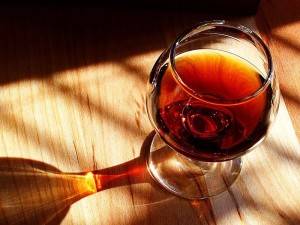 People who exercise aren’t particularly puritanical. Often, they are the opposite: they can be dedicated (indeed, disciplined) sensualists, hedonists, in it for the endorphins, for the euphoria. So it’s no surprise that they seek the same buzz in other places, including the pub. A study by the University of Miami found that women who exercise are more likely to binge drink that those who don’t work out. And “the more people exercise, the more they drink — with the most active women consuming the highest amounts every month.”
People who exercise aren’t particularly puritanical. Often, they are the opposite: they can be dedicated (indeed, disciplined) sensualists, hedonists, in it for the endorphins, for the euphoria. So it’s no surprise that they seek the same buzz in other places, including the pub. A study by the University of Miami found that women who exercise are more likely to binge drink that those who don’t work out. And “the more people exercise, the more they drink — with the most active women consuming the highest amounts every month.”
Binge drinking is not good. It is numbing, so anti-sensual. It is self-destructive. It messes up your sleep. And it causes you to think you see a pleasing symmetry in faces when it just isn’t there.
To wit: researchers at London’s Roehampton University have identified a link between alcohol and your perceptions of the attractiveness of others. You have your complicated theories about this. You think it has to do with social lubrication and a lowering of inhibitions, which leads to a lower of standards, which leads to what we will charitably call romance.
Science says it is less complicated. The study (“the first to probe the beer goggles phenomenon”) says that when you’ve been drinking, you are less adept at recognizing who has a symmetrical face. Longstanding research says you like a potential partner with a symmetrical face–which is a sign of good genes, apparently–and a couple of martinis muddles your ability to judge that key attribute.
We find this finding muddled. Alcohol isn’t going to make people’s faces look more symmetrical, is it? No. People are going to look kind of blurry and off-balance, which ought to make them seem less attractive. But science says the opposite is true: people who drank as little as a pint and a half of beer often saw a face “as being symmetrical when it was asymmetrical.”
Binge-drinking lady exercisers, take note: Women drinkers were particularly inclined to misjudge the misshapen mugs.
So a pint and a half can lead you into trouble (or at least a walk on the asymmetrical side, which evolution says could be trouble). But liquor also helps you get out of trouble. No, that never happens. But after a heart attack it can help you get healthier better than abstinence. By which we mean abstinence from drinking, not the other kind, which (as noted above) goes out the window when you’re drinking.
Science has shown that alcohol helps you maintain a healthy heart, but new research points out that it has benefits after a heart attack, too. The study followed 1,818 male heart attack survivors for up to 20 years. After controlling for other health factors, it found that “compared with abstainers, men who drank one or two glasses of beer or wine daily, or one or two shots of liquor, were 34 percent less likely to die from any cause and 42 percent less likely to die of cardiovascular disease.”
We said this before: imagine the parades if we had just discovered a medicine that could have that effect. As with all medicines, though, dosage is critical: the benefit disappeared among those who had three or more drinks a day.”
Unfortunately, alcohol affects more than your heart. It also appears to have an emphatically negative impact on a woman’s risk of breast cancer. A new review finds that even a little wine or beer—a small glass of the former, a pint of the latter—“could increase the chances of developing the disease by 5 percent.” Five percent might not sound like a lot, but two large glasses of wine bumps the risk “by 30 percent while those who drink three or more drinks a day are up to 50 percent more likely to develop the disease than those who don’t drink at all.”
That needs repeating. Three drinks increases your risk of breast cancer by 50 percent.
Let’s recap:
- Two drinks good for post-heart attack health.
- Two drinks bad for breast cancer risk.
- Two drinks good for guys with lopsided faces, maybe bad for women looking for a mate.
- Three drinks and more a temptation for hardcore women. Also not good for heart health. And scary for the way it increases a woman’s chance of getting breast cancer.
Based on this information, if society considered only breast cancer, it would ban alcohol. If it considered only heart disease, it would put it in our drinking water, like fluoride. And to further complicate the matter, as noted earlier, a woman might find the risks and benefits shift over time, with the cancer risks of drinking dictating abstinence in a woman’s youth and the coronary benefits supporting that glass or two of wine after age 50.
Photo: A glass of port wine (2003), by Jon Sullivan, via Wikimedia Commons.









